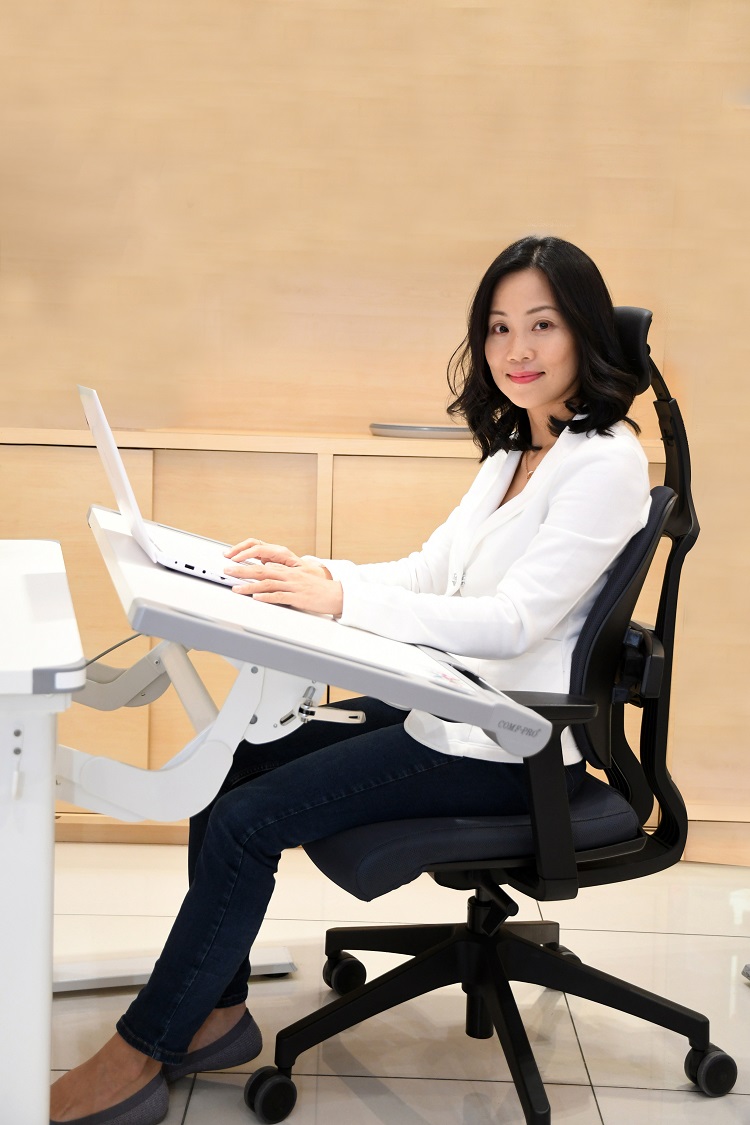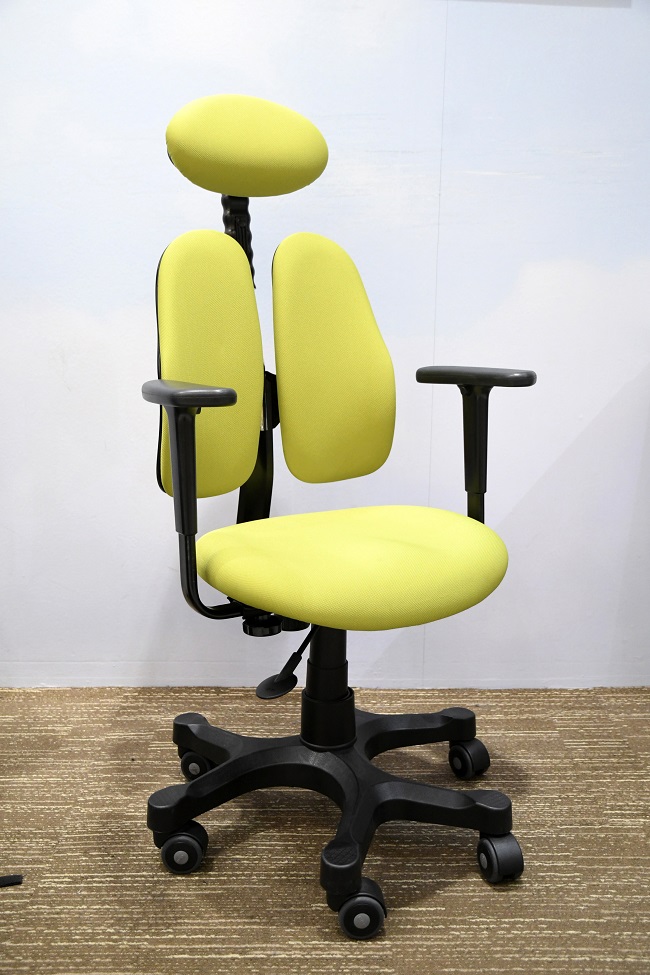In this modern age, office employees spend an average of eight hours a day glued to their desk and computers in the office or wherever they choose to work.
Such long hours sitting put a strain on the back and neck which is no wonder that back and neck aches are common occurrences especially when the sitting posture is incorrect. In the long run, it may even lead to more serious health issues. However, such a risk could be reduced if we use ergonomic chairs and desks.
According to Ergoland Alliance managing director Evonne Ng, for a chair or desk to qualify as ergonomic furniture, it needs to fit two criteria — comfort and efficiency.
“When we talk about an ergonomic chair, first of all, you need to look at the back care of the chair. Can the chair support your body perfectly and fit your body contour? The key is whether it can provide you with dynamic seating — which means it allows continuous movement (the back support moving together with your back when movement is made) while you are sitting down. The advantage of dynamic seating is that it reduces pressure on the back,” Ng tells EgdeProp.my.
Meanwhile, she notes that desks that are ergonomic in nature allow for adjustments to suit a person’s height. Ideally, the height of the desk should be two fingers above the user’s navel.
“It should not be too low or too high. Otherwise, it puts a strain on your neck and shoulder,” says Ng, who has been promoting ergonomic furniture for more than 10 years.
As for its efficiency, Ng relates it to comfort whereby if a person’s body is comfortable, his or her focus and productivity would also be good.
“When we slouch, you become tired and your back becomes strained without you even realising it. When the desk height is suited to your body height, it prevents you from slouching, making you more efficient in delivering your work,” she says.
Growing awareness on its benefits
With rising awareness, interest and demand for ergonomic furniture have also increased but compared to Scandinavian countries for instance, Malaysia is still far behind in terms of usage.
“Over there [in Scandinavian countries], eight out of 10 corporate offices use ergonomic furniture such as a sit-stand desk. They know the long-term benefit of using furniture such as these because they understand that our bodies are not meant to be sat down for long hours. Usually, you sit for two to three hours and then you can work standing up to reduce the pressure on your back. Not only that, when you switch between sitting and standing, you also lose calories when you are standing up. But for Malaysian companies, only one or two invest in ergonomic solutions,” Ng notes.
She says it is human nature to find a solution only when a problem occurs.
“As we all know, prevention is always better than cure. In my perception, it is always better to prevent future health problems which may incur a lot of medical cost. Another reason for the lack of ergonomic furniture usage is the pricing factor as most people have the perception that ergonomic furniture is expensive. But one should not look into the initial investment made. Instead, focus on the overall lifetime cost..
“A good quality ergonomic furniture has a life span of four to five times more compared to a normal furniture. If you go to a normal furniture shop, an office chair easily costs you RM700-RM800. Not only it may not be comfortable, after 1-2 years there may be wear and tear which needs additional replacement cost. The lifetime cost may be even more expensive in the end,” says Ng, adding that most ergonomic furniture for children can be used all the way to their teen years or even adulthood.

Prices range from RM1,000-RM5,000 depending on size and specifications.
When buying ergonomic furniture, look for authenticity and consider the after sales service.
“Make sure the desk or chair really come with full lumbar support and fully adjustable to suit each specific individual. Suppliers like us also provide a warranty of 10 years for our furniture so, it is important that customers look for responsible sellers who could provide after sales service should they have further enquiries after they buy the furniture. It is important for us to educate people and make sure the furniture is used correctly so that the maximum benefit can be harnessed from their usage,” she concludes.
This story first appeared in the EdgeProp.my pullout on May 14, 2020. You can access back issues here.



senaiairportcity-overallview.jpg?wyCmw4_M_WK1b.OkWEhqLZeyUgCmSweP)



